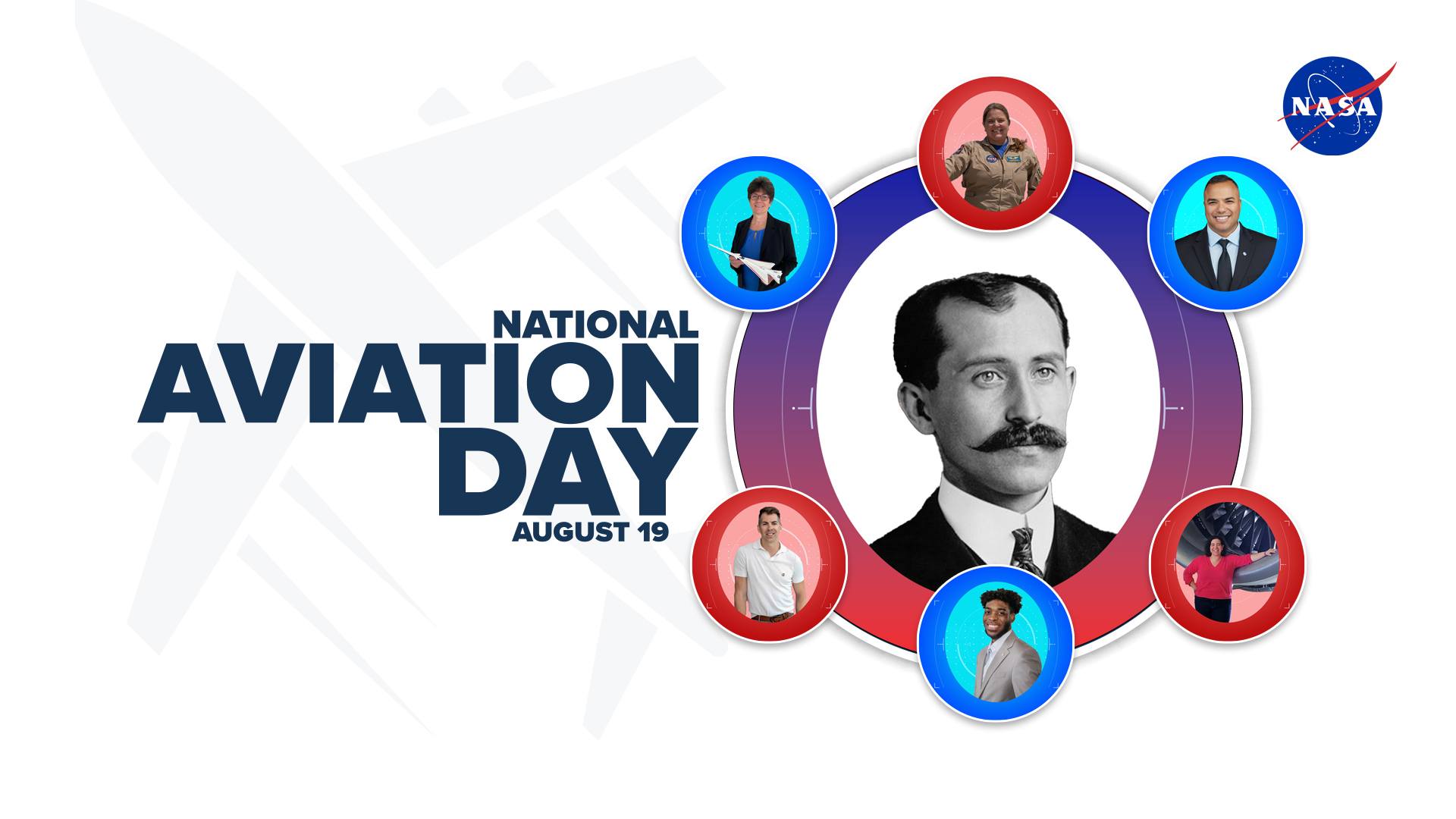The first “A” in NASA stands for Aeronautics – so naturally that means today, Aug. 19, National Aviation Day, is one of our favorite days all year!
National Aviation Day was first proclaimed in 1939 by President Franklin Roosevelt to celebrate the birthday of aviation pioneer Orville Wright, who, with his brother Wilbur, in 1903, were the first humans to achieve powered flight.
Each year since the President first marked the occasion, sky-faring Americans have come together on this date in an annual celebration of flight – a time to revel in spreading our wings and slipping the surly bonds of Earth.
All of us at NASA share in that celebration. We love everything about flight, whether it’s into space or within Earth’s atmosphere.
Our aeronautical innovators are dedicated to improving the design of airplanes to carry on pioneering new technologies in high-speed flight, airframes and propulsion methods, aerospace engineering modelling, and automating airspace and safety management.
Our heritage in aviation research goes back more than 100 years. We’ve helped air travel become a safe, efficient, reliable form of transportation. If you’re heading to an airport, keep an eye out for these NASA-developed aviation technologies you might see on your flight:
How else can you celebrate National Aviation Day? Here are seven ideas:
Explore your local science center for exhibits about aviation and how an airplane flies. And if you live within a short drive from Norfolk, Virginia; Cleveland, or San Francisco, you might consider checking out the visitor centers associated with NASA’s Langley Research Center, Glenn Research Center, or Ames Research Center, respectively. These major NASA field centers play host to the majority of NASA’s aeronautics research. (NASA’s Armstrong Flight Research Center, the fourth of NASA’s aeronautics centers, is located within the restricted area of Edwards Air Force Base in California so they do not have a public visitor’s center.)
There’s no shortage of classic aviation-themed movies available to watch in any format (streaming, DVD, cinema, library rentals, etc.), and with any snacks (popcorn, nachos, gummies, etc.). We dare not attempt a comprehensive list, but a good place to start is our documentary “X-59: NASA’s “Quesst” for Quiet Supersonic Flight” available to stream on NASA+.
Why not? It doesn’t have to be big enough to actually fly in – plastic model kits of the world’s most historic aircraft can be just as rewarding and just as educational, especially for kids who might be thinking about a career as an engineer or technician. In fact, many astronauts will tell you their love of aviation and space began with putting models together as a child. Another idea: Grab some LEGO bricks and build the airplane of your dreams. Or make it easy on yourself, fold a paper airplane and shoot it across the room.
Pilots will tell you there is a wonderful sense of freedom in flying, not to mention the incredible views and the personal sense of accomplishment. At the same time, being a pilot is not for everyone, but you won’t know unless you try! Many general aviation airports in the nation have a flight school that may offer an introductory flight lesson at a discounted price. And if you want a taste of flight without leaving the ground, computer desktop flight simulators such as Microsoft Flight Simulator or X-Plane are popular choices and can get you into the virtual sky in short order.
Aviation-themed books, whether fact or fiction, are all over the shelves of your local library – literally. That’s because there’s no single Dewey Decimal number for aviation. A book about aviation history will be in a different section of the library than a book about how to design an airplane. And creative nonfiction books such as the Mark Vanhoenacker’s “Skyfaring,” or autobiographies such as Eileen Collins’ “Through the Glass Ceiling to the Stars,” are off on yet another shelf. Don’t hesitate to ask your librarian for help. And when you get back from the library, or while still there, jump online and check out the NASA e-books you can download and own for free.
At Washington’s National Airport, it’s Gravelly Point. In Tampa, Florida it’s International Mall. If you live near a major international airport, chances are you know the best place where the locals can go to watch aircraft take off and land up close. Be sure to take heed of any security restrictions about where you can and can’t go. But once you have your spot picked out, then load up your picnic basket and camp out for an evening of plane spotting. See how many different types of airplanes you can count or identify.
NASA’s aeronautical innovators are working to transform air transportation to meet the future needs of the global aviation community. Sounds like a big job, right? It is and there are many ways in which NASA is doing this. Improving an airplane’s aerodynamics, making airplanes more efficient and quieter, working with the Federal Aviation Administration to improve air traffic control – the list could go on for many thousands of more words. Bookmark our NASA Aeronautics topic page and follow us on social media @NASAaero.
So remember this National Aviation Day, NASA is with you when you fly!




